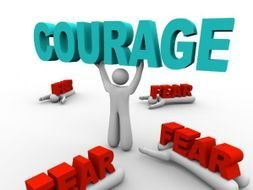Bullying can leave a child feeling powerless, isolated, and anxious. While emotional support, open communication, and school intervention are critical, there’s another tool that can play a powerful role in a child’s recovery: exercise. Physical activity does more than build muscles—it builds resilience, confidence, and a stronger sense of self-worth. For a child who has been bullied, regular exercise can be a stepping stone to regaining control over their body, their mindset, and their future.
- Exercise Builds Confidence and Self-Esteem
Victims of bullying often internalize negative messages about themselves. Participating in physical activity—whether it’s resistance training, martial arts, swimming, or dance—gives children tangible evidence of their own progress.
- They can see improvements in their strength, coordination, or speed.
- They can feel their bodies becoming more capable.
- They learn that growth is possible through effort.
This sense of achievement translates beyond the gym or field, helping them approach social and academic challenges with more self-assurance.
- Physical Activity Reduces Stress and Anxiety
Bullying can leave children in a constant state of stress. Exercise releases endorphins, the brain’s natural mood lifters, which help combat anxiety and depression. Activities like yoga, swimming, or even a brisk walk can help children process difficult emotions in a healthy way. Over time, these endorphin boosts help them feel more emotionally balanced and better equipped to cope with challenges.
- Movement Teaches Discipline and Focus
Sports, structured workouts, and even simple home-based exercise routines require consistency and discipline. Children learn:
- How to set goals.
- How to work steadily toward them.
- How to manage frustration when progress is slow.
These lessons mirror real-life situations, helping them navigate the emotional ups and downs of dealing with peers and conflict.
- Group Activities Create Positive Social Connections
Bullying often leads to isolation, which can deepen feelings of loneliness. Group fitness classes, recreational sports leagues, or even after-school running clubs give children opportunities to make new friends in a supportive environment.
Being part of a team or class creates a sense of belonging—something every bullied child desperately needs.
- Exercise Improves Posture and Body Language
It’s not just about physical fitness. Regular exercise strengthens core muscles, improves posture, and boosts body awareness. Standing taller and moving with confidence can reduce the appearance of vulnerability—making a child less likely to be seen as a target.
- Physical Preparedness Can Boost Safety Awareness
While the goal is never to encourage violence, activities like martial arts can teach children self-protection skills, spatial awareness, and the ability to respond calmly under pressure. These skills build confidence and a sense of personal safety, which can help them walk into social situations feeling empowered.
Practical Ways to Get Started
If your child has been bullied and you’d like to explore the benefits of exercise, here are some simple steps:
- Let them choose the activity—children are more likely to stick with something they enjoy.
- Start small—even 15 minutes of movement a day can help.
- Consider a supportive environment—look for coaches, trainers, or instructors who foster encouragement over competition.
- Blend solo and group activities—individual training builds personal skill, while group activities encourage social growth.
The Bottom Line
Exercise isn’t a cure-all for bullying—but it is a powerful tool in helping a child heal, rebuild confidence, and develop the resilience to face challenges head-on. By supporting your child in becoming physically stronger, you’re also helping them grow mentally and emotionally stronger. In the long run, that’s a kind of protection no bully can take away.

